Myrica pensylvanica (bayberry)
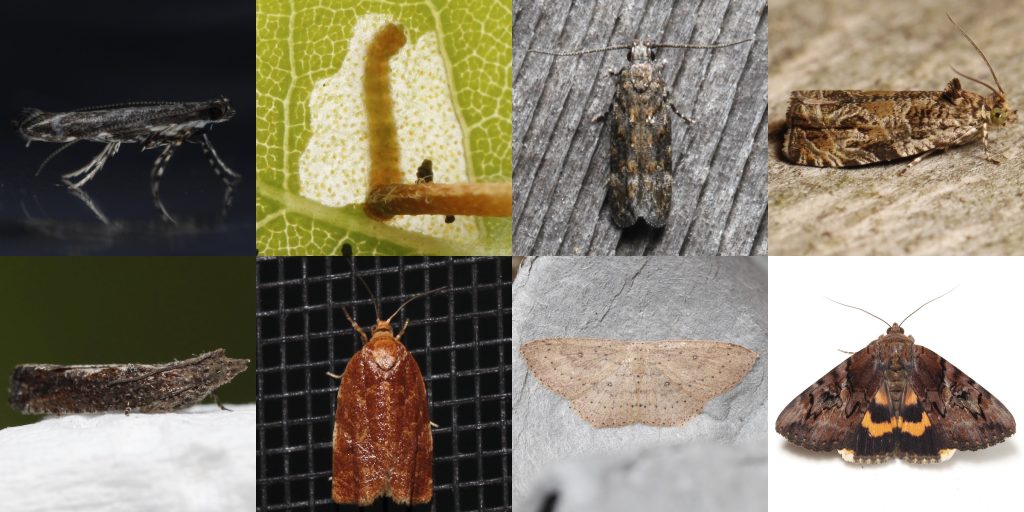
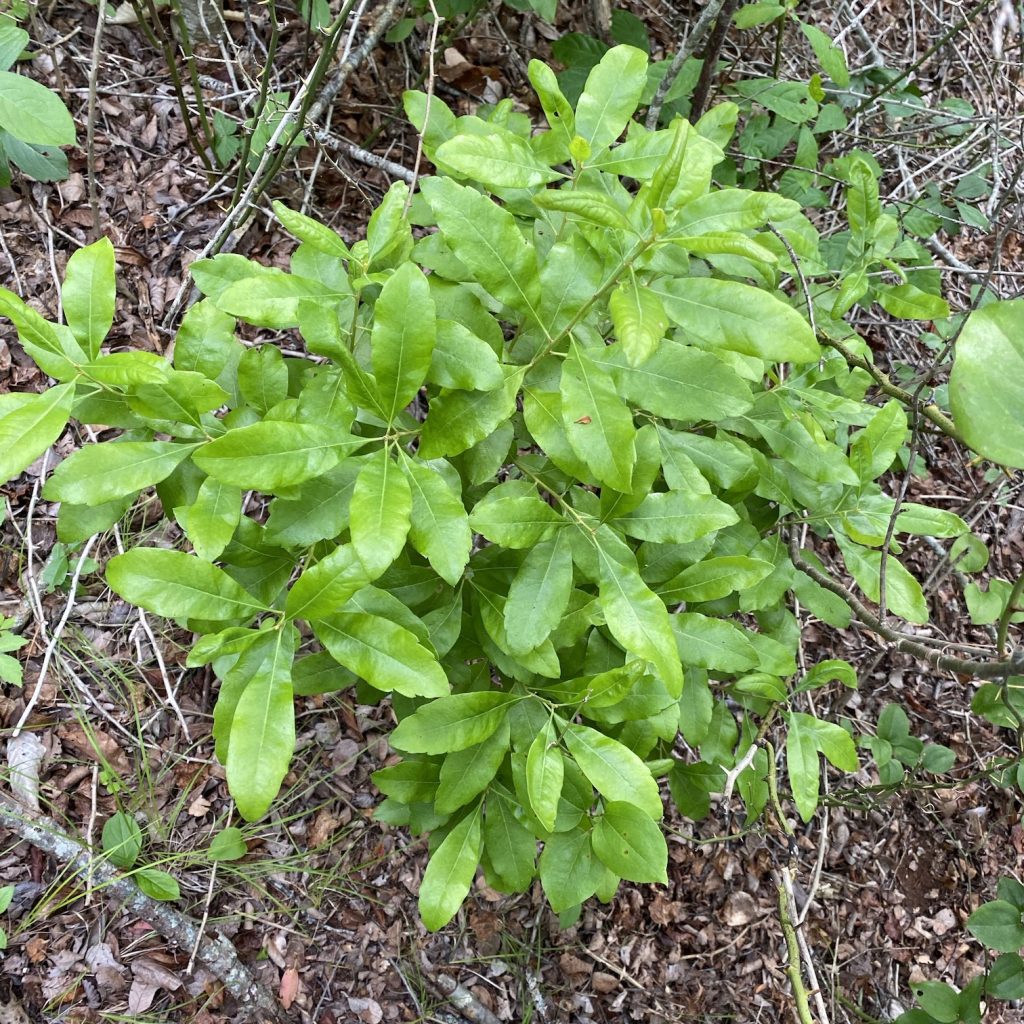
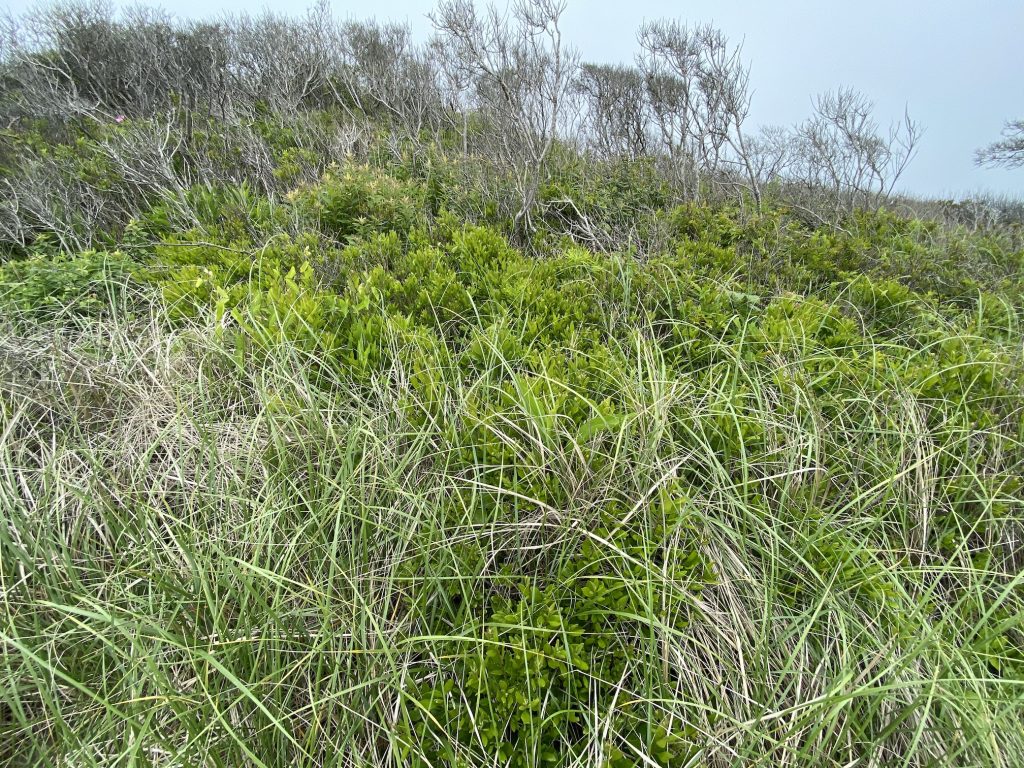
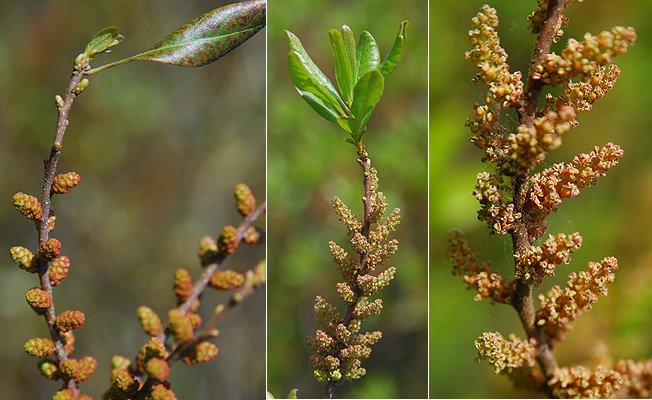
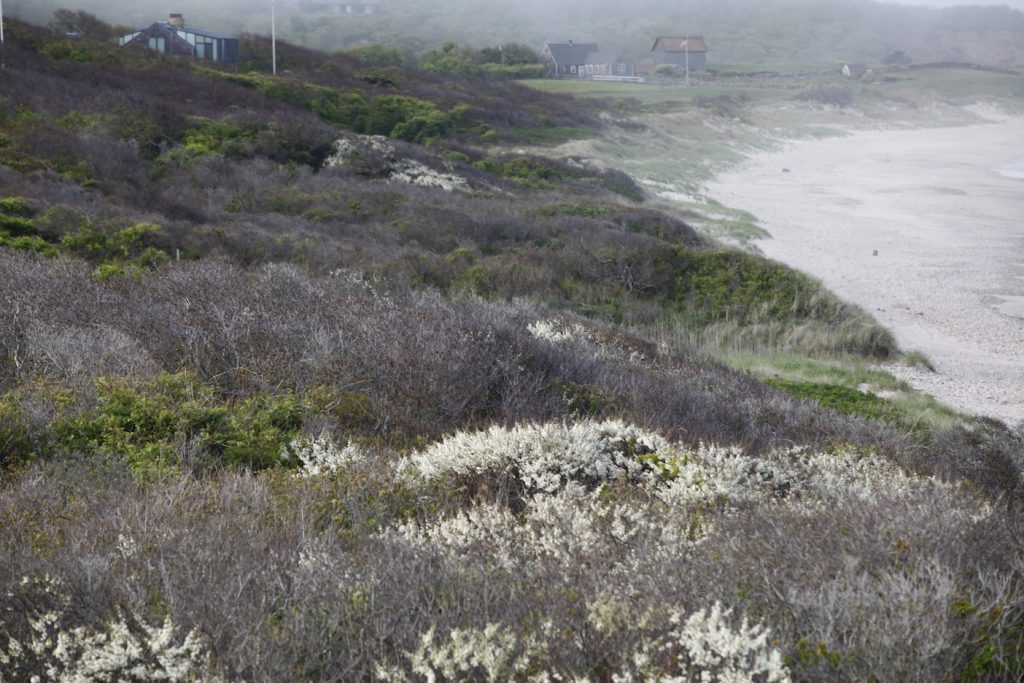
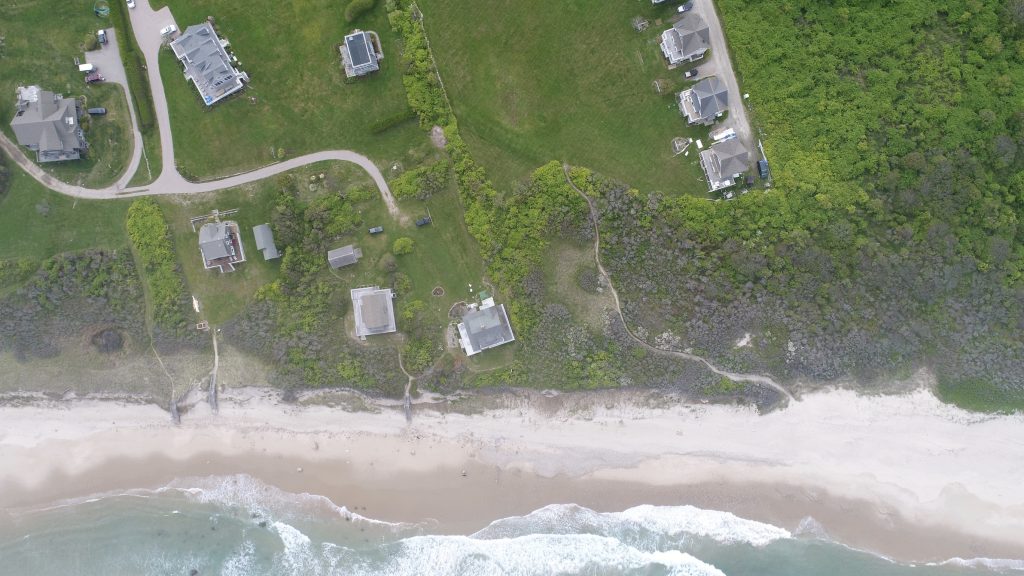
Specialists of bayberry (Myrica pensylvanica) on Block Island
Block Island’s populations of all the species listed below are presumed to rely exclusively on bayberry, which is the only species of Myricaceae present on the island. Other Myricaceae have been reported as suitable hosts for many of the species below. Coleophora comptoniella also feeds on Betulaceae, a family scarcely found on Block Island.
Nepticulidae
Stigmella myricafoliella (Busck, 1900) is a linear leafminer of Myricaceae. Larvae develop rapidly, making the species somewhat hard to rear despite being fairly common on Block Island. While mines of this species are easily distinguished from those of the four other bayberry specialist leafminers found on Block Island, they may be indistinguishable from those of Stigmella corylifoliella (Clemens, [1862]), an adult of which was collected at light on Block Island and confirmed by DNA barcode. S. corylifoliella is one of the most polyphagous leafmining moths known, having been reared from various Betulaceae, Ericaceae, Myricaceae, Rhamnaceae, and Rosaceae. The color of the larva (pale green in myricafoliella and yellow in corylifoliella) is thought to be a consistent character separating these species. Adults of both species are externally identical to each other and a number of other Stigmella species.
Heliozelidae
Aspilanta argentifera (Braun, 1927) is a blotch miner of Myricaceae. As in all Heliozelidae, the mature larva forms a portable case out of a pair of discs cut out of the upper and lower epidermis of its host leaf and drops to the ground to pupate in its case, leaving an oval-shaped hole at the edge of its completed mine. I have never seen mines of this species, but Mike Nelson and Dave Wagner reported finding them on Block Island in their 1998 survey of leafminers. Adults are externally identical to those of Aspilanta ampelopsifoliella (Braun, 1927), which feeds on Virginia creeper (Parthenocissus virginiana). Nelson and Wagner (1998) reported mines of A. ampelopsifoliella on Block Island, and I found a vacant mine in 2019. I have seen four unidentified adults of this genus.
Gracillariidae
Caloptilia flavella (Ely, 1915) forms an underside blotch mine in bayberry and feeds within a folded leaf in later instars. We have found three adults apparently belonging to this species in our survey but have not found mines. Nelson and Wagner (1998) reported this species.
Ornixolinae n. Gen. n. sp. mines leaves of Myricaceae. The larva initially forms a linear mine before entering the midrib and feeding within in for a time. The larva then leaves the midrib and forms a large, irregular blotch mine, exiting the mine to pupate on the leaf edge or elsewhere. The larva pupates within an oblong, white cocoon ornamented with a 20 or 30 froth spherules.
Cameraria picturatella (Braun, 1916) forms an upper surface blotch mine in bayberry. Mines are brownish and occupy most of the leaf surface when completed, making them highly conspicuous. In my limited experience, the rate of parasitism is very high. The species is common on Block Island, where it is univoltine, with larvae mining July into August. Adults evidently overwinter but are rare at lights, with records from August, September, and June.
Depressariidae
Agonopterix walsinghamella (Busck, 1902) is a leaftier of Myricaceae evidently rare on Block Island, with one rearing record and five adult records.
Coleophoridae
Coleophora comptoniella (McDunnough, 1926) is a case-bearing leafminer of Myricaceae and Betulaceae that eats a series of windows in multiple leaves of the host plant from within its leaf case. The species is univoltine on Block Island with adults on wing in July and August.
Gelechiidae
Neotelphusa n. sp. is a common leaftier of Myricaceae. The species is univoltine and flies mainly in July on Block Island.
Filatima confusatella Darlington, 1949
Aroga epigaeella (Chambers, 1881)
Tortricidae
Olethreutes myricana Kearfott, 1910 is a leaftier of bayberry univoltine on Block Island with adults on wing in summer. The species is currently treated as a junior synonym of Olethreutes sericoranum (Walsingham, 1879) in the MONA checklist. If this synonymy is unwarranted, O. myricana is a specialist of Myricaceae.
Strepsicrates smithiana Walsingham, 1891
Archips myricana (McDunnough, 1923)
Pyralidae
Acrobasis comptoniella Hulst, 1890
Geometridae
Cyclophora myrtaria (Guenée, [1858])
Erebidae
Catocala muliercula Guenée, 1852
Catocala badia badia Grote & Robinson, 1866
Host specialization unclear
Pyralidae: Condylolomia participalis Grote, 1873
Notodontidae: Coelodasys apicalis Grote & Robinson, 1866